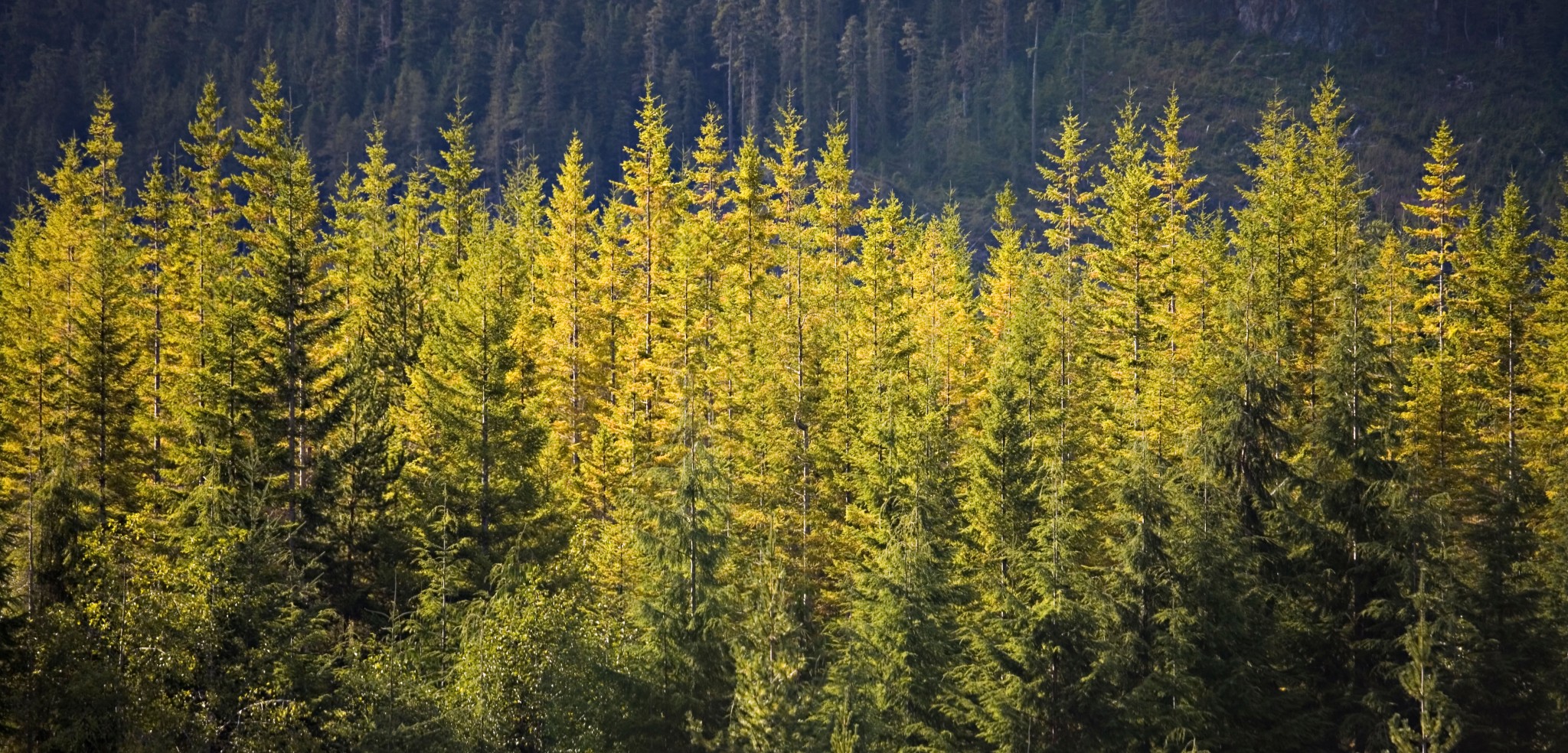How British Columbia’s Coastal People Fertilized the Forest
Indigenous people’s castoff clamshells made the forest grow bigger.
Article body copy
The wild western red cedar forests of Calvert and Hecate Islands, off the British Columbia central coast, are a vision of untouched wilderness. Located about two hours by boat from the nearest village, these rugged islands seem to offer glimpses of life without human interference.
But even here, subtle cues belie the influence of the human hand. Trees bear the scars of timber extraction and bark stripping, and lines of boulders demarcate clam gardens, where indigenous people enhanced intertidal areas for shellfish. For at least 6,000 years, until the islands became less frequently inhabited around 200 years ago, clams were a staple food for the people along these shores.
Over thousands of years, discarded clamshells accumulated into middens up to five meters deep. Coastal people used the midden material to level the ground of habitation sites or to terrace the shoreline. But now, researchers working in the Hakai Lúxvbálís Conservancy, led by ecologist Andrew Trant, have shown that these middens also caused the forest to grow taller, thicker, and greener.
(Trant’s research is supported by a grant from the Tula Foundation, which also funds Hakai Magazine. The magazine is editorially independent of the institute and foundation.)
“This research is an important example of a diverse cultural landscape, where man’s footprint over the last 6,000 years has had a positive impact on the local native ecosystem,” says Sula Vanderplank, a botanist who was not involved in the present research. In her own studies, Vanderplank has found similarly beneficial shell midden effects on plant diversity in Baja California.
“As the Anthropocene advances, it’s important to be aware of the positive impacts that humans can have on native biodiversity,” says Vanderplank. “It is also critical to identify these sites where cultural heritage and biodiversity can be protected together, strengthening the conservation of both.”
Trant’s findings demonstrate that long-term human occupation and large-scale land use change can benefit the wider ecosystem, and need not always be associated with environmental degradation.
The team used airborne lidar and on-the-ground measurements of the height of the forest canopy, the extent of forest cover, and how much green light is reflected—a measure of photosynthetic capacity—while archaeologists identified and radiocarbon dated middens.
The team found that western red cedar trees growing on middens had greater radial growth and less dieback from their uppermost branches than those growing farther from the shell middens. Previous research has shown that as clamshells break down in middens, they release calcium and lower the acidity of the soil. This allows plants to absorb soil nutrients such as phosphorus more easily. A midden’s positive influence on the trees’ health extended up to 200 meters from its perimeters.
While there have been some documented instances of midden material being intentionally used as fertilizer, such as in Neolithic Scotland, in this case the benefits seem to have been inadvertent. The red cedar trees that now benefit from the middens were not a common species in the area when the shells were first deposited.
It is difficult to determine the precise intent behind the middens, but Trant says their presence speaks to the peoples’ historical practices, and what they were doing on the land. “I would love to know what it looked like then. It would have been such a busy place—you would have looked out on the water and seen boats and fires everywhere.”
Trant’s next step is to work with indigenous people who retain some of their culture’s traditional knowledge to understand more about the practices that led to this constructive habitation. But out of this ancient landscape comes a new appreciation for what a built environment can look like: a place where it is not clear where a house ends and the natural world begins.

